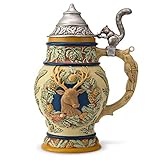All Categories
A Guide to the Bodhisattva Way of Life
Share Tweet
*Price and Stocks may change without prior notice
*Packaging of actual item may differ from photo shown
- Electrical items MAY be 110 volts.
- 7 Day Return Policy
- All products are genuine and original








About A Guide To The Bodhisattva Way Of Life
Product Description A guide to the Bodhisattva ideal and the process of enlightenment, this edition of the classic Buddhist treatise “will stand for many years as the standard English translation” (Publishers Weekly) In the whole of the Tibetan Buddhist tradition, there is no single treatise more deeply revered or widely practiced than A Guide to the Bodhisattva Way of Life. Composed in the eighth century by the Indian Bodhisattva Santideva, it became an instant classic in the curricula of the Buddhist monastic universities of India, and its renown has grown ever since. Santideva presents methods to harmonize one's life with the Bodhisattva ideal and inspires the reader to cultivate the perfections of the Bodhisattva: generosity, ethics, patience, zeal, meditative concentration, and wisdom. From Library Journal These two volumes present perspectives on the Boddhisattva ideal, the distinguishing characteristic of Mahayana Buddhism that emphasizes the desire for enlightment as an act of altruism toward all beings. A Guide to the Boddhisattva Way of Life is a classic of Tibetan Buddhism, composed in the eighth century by a Buddhist monk. The Wallaces (a professor and a student in religious studies, Stanford Univ.) translated this work with careful attention to Tibetan and Sanskrit versions, which makes their translation unique. The main text has been re-created from the Sanskrit with attention to the Tibetan. Where the nuances in the originals differ significantly, the translation of the Tibetan version is given in the notes. The Thirty Seven Practices of Boddhisattvas is a transcription of an oral teaching by a Buddhist scholar and teacher. The text on which the teaching is given is a set of verses written in the 14th century by a Tibetan Buddhist monk. Like the first title, this work seeks to elucidate the day-to-day practice of the Boddhisattva. The original verses are short and fairly clear, and the commentary by Rinchen makes the meaning and the demanding character of the Boddhisattva ideal realistic for the contemporary reader. The two titles offer insight upon insight as to the way a life should be lead. Rinchen's is perhaps the more accessible to general readers. For the price, any library with an interest in Buddhism would do well to acquire both.?Mark Woodhouse, Elmira Coll. Lib., N.Y. Copyright 1997 Reed Business Information, Inc. Review "Will stand for many years as the standard English translation of this key Tibetan Buddhist text."— Publishers Weekly "The Wallaces have produced a concise, literal, and elegant translation. The extant Sanskrit edition frequently differs from the one used in Tibet a millennium ago, and the Wallaces have noted these differences in copious footnotes. These features make their translation both highly readable and an excellent source for scholars of the original languages."— Tricycle From the Publisher Santidevas classic treatise, the Bodhicaryavatara, translated here as A GUIDE TO THE BODHISATTVAS WAY OF LIFE, has been the most widely read, cited, and practiced text in the whole of the Indo-Tibetan Buddhist tradition. Ur ston rin chen grub, a renowned Tibetan scholar of the thirteenth century, wrote in his HISTORY OF BUDDHISM IN INDIA AND TIBET that according to the Buddhist tradition, one hundred commentaries on the Bodhicaryavatara were extant in India, but only eight of them were translated into Tibetan. Moreover, His Holiness the Dalai Lama comments that the Bodhicaryavatara is the primary source of most of the Tibetan Buddhist literature on the cultivation of altruism and the Spirit of Awakening, and his recent comprehensive work entitled THE WORLD OF TIBETAN BUDDHISM frequently cites this text. The Bodhicaryavatara has also been a widely known and respected text in the Buddhist tradition of Mongolia, and it was the first Buddhist text translated into classical Mongolian from Tibetan by Coiji Odser in 1305. Although the Bodhicaryavatara has already been translated s



























